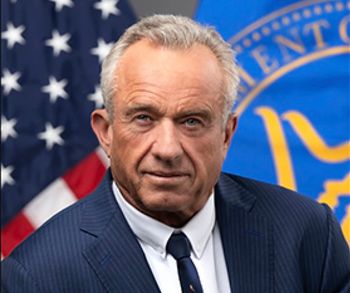
3 Big Issues Facing Healthcare for Veterans
Divisions over the VA’s role and its performance in recent years have started to spawn policy changes, and the process seems to be accelerating.
VA workers and patients at the
Memorial Day is dedicated to those who died serving in the United States’ armed forces. The majority of American soldiers, however, survive their service—but many move on with a unique host of medical challenges that require detailed, personalized care. The agency meant to help them along the way, the Department of Veterans’ Affairs (VA), receives equal parts criticism and defense for its ability to provide that.
And the divisions over the VA’s role and its performance in recent years have started to spawn policy changes, and the process seems to be accelerating quickly. Let’s look at the major storylines that are unfolding as the United States decides how (and if) it will reshape the agency that cares for its service members.
The Leadership Question
VA Secretary has been a cabinet-level position for nearly 30 years. Since 1989, 16 men have held the position: 9 were confirmed by Senate while the other 7 held the seat in an Acting capacity. Prior to January 2017, no single presidential term had seen more than 3 men hold the title, and no VA Secretary had served less than 3 years of a President’s first term.
>>READ:
In less than half of the Administration’s first term, the agency has had 3 Secretaries—2 acting, 1 confirmed. David Shulkin, MD,
It isn’t just Secretaries who have seen turnover, however. In April, the agency’s Acting Chief Information Officer, Scott Blackburn, resigned. He was the 4th high-ranking VA official to leave the agency in a span of less than 6 months, and the continual turnover has left the agency’s executive leadership page on its website looking
The Privatization Battle
Shulkin himself alleges he was fired because he stood in the way of VA privatization. For years there has been suspicion on behalf of the political left that their counterparts on the right want to take the medical functions of the agency—which contains the largest integrated health network in the country—out of the government’s hands.
“They saw me as an obstacle to privatization who had to be removed,”
For Shulkin and other opponents of VA privatization, the agency’s failures aren’t the driving factors: It’s the successes. When veterans can get access to care, they say the VA actually
“The dismantling of VA is desirable to Republicans because of what it represents: a successful, publicly funded, integrated health-care system,” VA physician and former administrator,
Those who believe the government is on an inexorable drive towards privatization took note of the sweeping, recently-passed VA MISSION Act, a $55 billion piece of legislation meant to evaluate the agency’s infrastructure and realign how the agency reimburses veterans who opt for care outside of the VA. While it passed the Senate with more than 90 votes, it still
The Modernization Issue
Whether the VA health system remains government-run or goes private, its IT infrastructure is going to get a facelift. Its legacy electronic health records (EHR) system, Vista, was actually one of the first EHRs ever designed and implemented. Dated in appearances and capabilities, it still receives some affection for its ease-of-use.
But its days are numbered. After nearly a year of delays, the agency
But it isn’t just EHRs that the agency will lean on. Short-staffing and the complexity of veterans’ health conditions have led the VA to become something of an
Related Coverage:






































